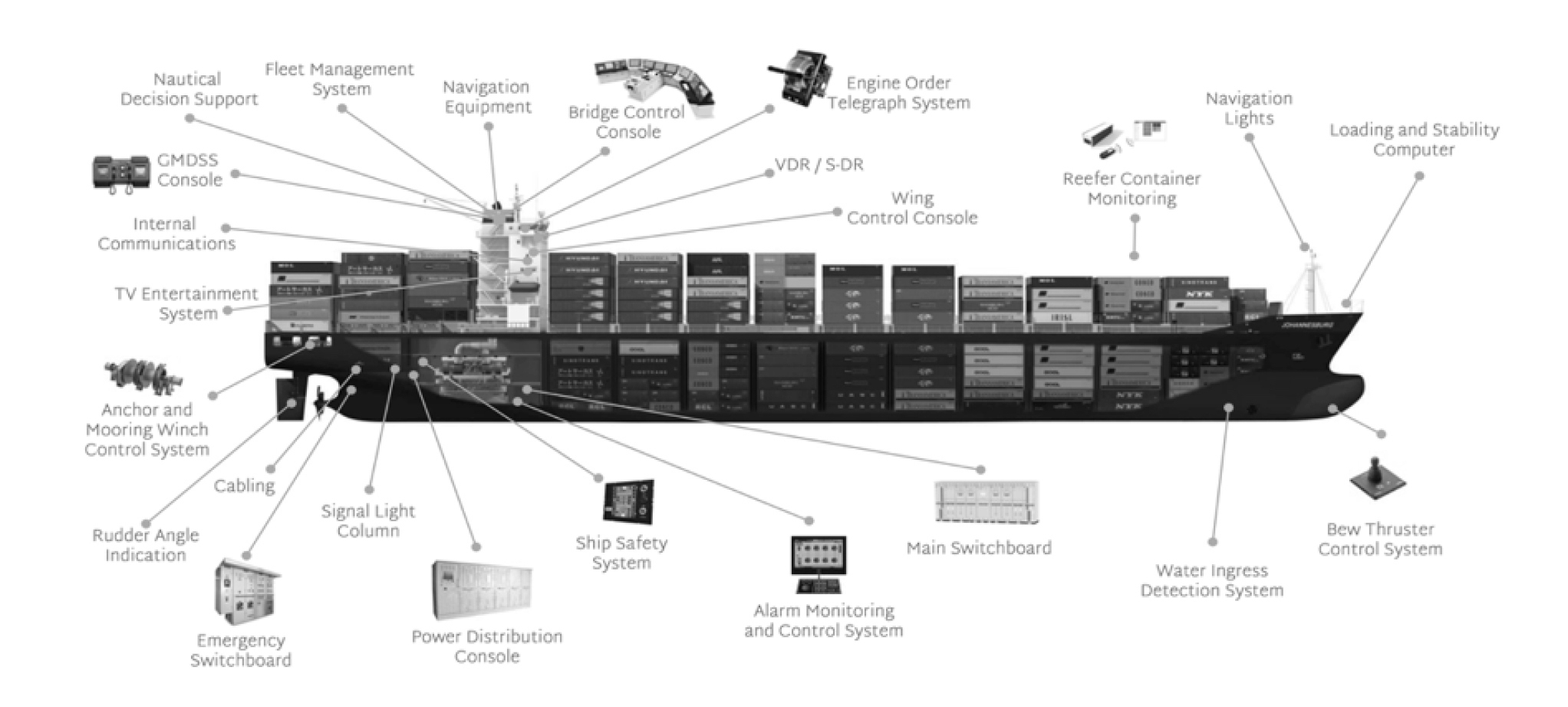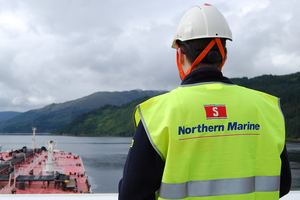
Secure, highly available, easy-to-manage IT infrastructure in the data center and out at sea
The maritime industry could be seen as one of the most volatile environments at the edge. Potentially harsh climates, distance to on-shore facilities, and different international stakeholders all contribute to creating complex and uncertain conditions that affect the safety and security of maritime organizations.

The explosion of sensors and "things" on a ship are one of the biggest security risks. Bridging the gap between the IoT devices, operational technology and the main onboard IT systems is crucial.
Running a highly available and secure IT infrastructure is an absolute must - but this can be a complex and costly endeavor, especially when there is little to no IT knowledge on a ship. IT infrastructure onboard must be easy to implement, update and maintain, and all at a low TCO.
Scale Computing Platform was designed from the ground up to simplify daily IT tasks. From initial deployment and routine system maintenance to capacity expansion and hardware replacement, administrative tasks are easily automated and remotely executed. Combining centralized management with cloud automation allows infrastructure and applications to achieve and maintain the desired state throughout the entire life of the environment.
Right-sized, edge-ready infrastructure combines compute, storage, virtualization and disaster recovery into a single solution that heightens security for each component individually. Growing regulations around cybersecurity increase the need for continuous availability and a tested business continuity and disaster recovery strategy for every shipowner and operator.
Out at sea, you can’t afford IT system downtime. Even if a hardware component or an entire appliance fails, a cluster running Scale Computing HyperCore can keep your systems running with little to no downtime.
“We were looking for ways to evolve our onboard IT infrastructure across our fleet. In the last several years, requirements for key infrastructure systems on board have changed. Each vessel now has two or more operational critical applications on its server infrastructure, meaning we really can’t afford any downtime. We need to be able to sustain equipment failure and still continue to operate."
IT Technical Lead
Northern Marine Charts Its Course with Scale Computing
Replacing or repairing any part of a ship’s onboard operating environment is very complex and can take days to fix, depending on the ship’s location. For Northern Marine, highly available, reliable IT infrastructure that was easy to manage was a must, and optimizing operations with self-healing, automated infrastructure for all applications was a critical next step.
Made for the Demands of Maritime IT Infrastructure
Simplicity
Deploys in less than an hour
Create new applications in seconds
Single pane, web-based management
Cloud-based management of remote sites and workloads
Automated storage management
No-downtime system updates for hardware and software
Single vendor support experience
Replacing multiple vendors with an integrated, self-healing infrastructure makes SC//Platform far easier to deploy and manage. Your IT administrators will spend less time managing infrastructure and have more time for projects that will move your business forward.
High Availability
Redundant critical hardware components
Automatic failover of applications from a failed appliance
Automatic data re-striping for failed disks
Highly available VMs/applications
Intelligent self-healing automation
Integrated disaster recovery, backup, replication and failover to remote systems
Out at sea, you can’t afford IT system downtime. Even if a hardware component or an entire appliance fails, a cluster running Scale Computing HyperCore can keep your systems running with little to no downtime.
Scalability and Flexibility
Scale-out without downtime
Seamless scale-out with automated storage configuration
Mix and match hardware appliances
Deployments as small as a single server through large clusters
Deployable on hardware designed for the edge, including very small, lightweight systems
Scale-out for higher performance
Traditionally, infrastructure scale-out has been so challenging that organizations planned and purchased infrastructure to accommodate growth up to five years in advance. The maritime industry faces new challenges with restrictions on physical size, power, noise, and manageability. With SC//Platform infrastructure, you buy only what you need and then scale out seamlessly when required.
Data Analytics and Reporting
Automation and technology advancements mean the shipowner, fleet manager, and crew have to deal with an exponential explosion of data. Understanding this “big data” means continued investment in solutions and systems on the shore and a ship. Continuous data analytics is possible only when applications and systems can support these activities.
Driven by new regulations (like CO2 emissions), higher levels of digitalization are required to support the growing need for real-time analytics to track and measure ships' performance and reduce fuel costs.
Data analytics support shipowners with technical management functions in applications and decision-making processes for compliance with regulations, safety operations, planned maintenance, fuel reduction and more. For a maritime crew, better insights related to vessel performance, onboard safety and risk exposure, and real-time analysis are required to make informed decisions. They simply cannot wait for a few hours till the data is analyzed.

White Paper: Technology Innovation at Sea
Scale Computing provides this white paper to explain the increased dependence on the combination of onboard IT infrastructure, the cloud and central, shore-based data centers. This paper is intended for shipowners, fleet managers, and IT staff implementing and managing maritime information technology
Related Resources
Video Surveillance & Security
Transportation
General
General
General
General
General
Transportation
General
General
General
More to Explore
General
General
See What Others Have To Say About Scale Computing
We are proud to have over more than a thousand positive customer reviews on the most trusted third-party industry reviews websites. Read what our customers have to say on Gartner Peer Insights, G2, and TrustRadius.









